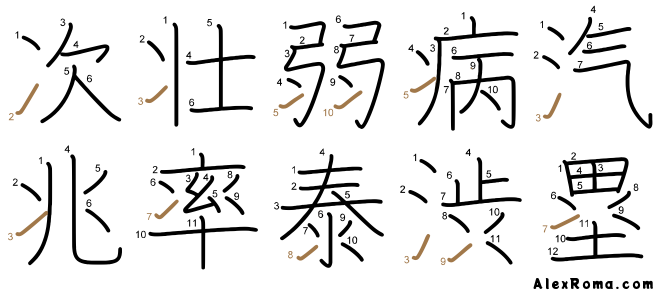Stroke direction rule 3 – the nisui rule
This rule represents an exception to the top-to-bottom rule, found in the 冫 nisui shape (pron. /nee-soo-ee/). The nisui rule states:
The lower stroke in the 冫 nisui shape is written from the bottom to the top.
The following shapes also contain the 冫 nisui shape:
- the 氵 sanzui shape;
- the 疒 yamaidare shape;
- the four symmetrical strokes in 氺 shitamizu.

In the above shapes, the pink arrows express the nisui rule, while the blue arrows show the strokes which are written normally, according to stroke direction rule 2, the top-to-bottom rule.
Although semantically (from a perspective of meaning) this would be incorrect, we can say that the shapes in the diagram above are variants of the 冫 nisui shape, and hence they are written according to the same principle: the lower stroke must be written from bottom-to-top.

In the diagram above I present twelve kanji containing the 冫 nisui shape. Practice writing these characters following the stroke diagrams, paying attention to the stroke direction of the 冫 nisui shapes.
